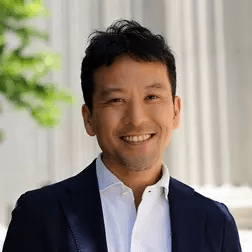[Part Ⅱ] The Eternal Beauty of Comfortable Colors Brings Peace of Mind to the Present and Future Generations
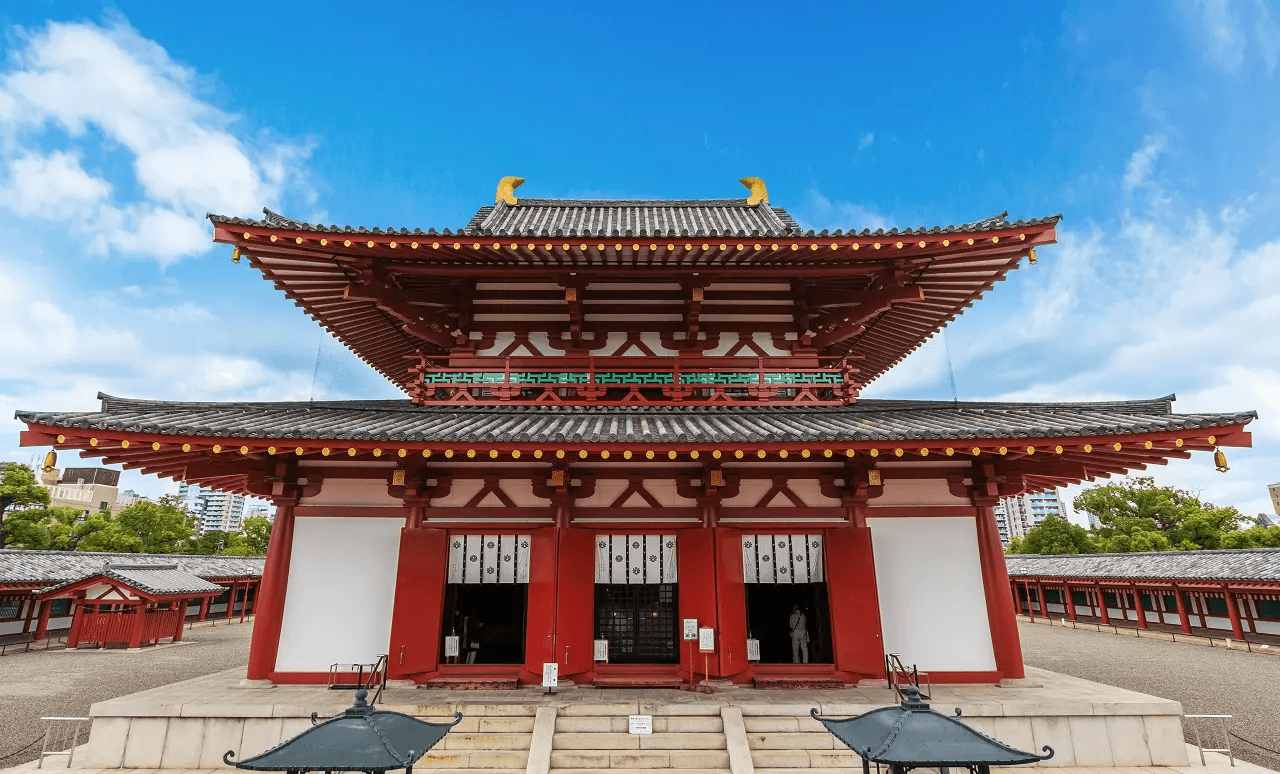
Shitennoji Temple
A Pioneer of Colorful Temples Built in and after the Sixth Century
Just as the present structures of Shitennoji Temple, the buildings of Horyuji Temple were painted when they were constructed. To paint timber frameworks, a reddish pigment known as Bengala was used. The pigment, mainly comprising red iron oxide, was produced by smashing hematite. A stone dish coated with Bengala was unearthed from the Shimaki ruin in Hokkaido, a habitat of paleolithic people living some 20,000 years ago. At burial sites of the Jomon period (ca 14,000–ca 1,000 BCE), there are traces of the red pigment scattered at the time of funerals. The sites where the pigment was stored have also been discovered.
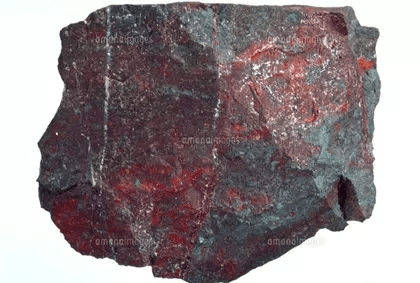
The construction of Buddhist temples, which began during the sixth century in Japan, was epochal in that their architectural designs were well organized particularly in terms of shapes and colors. The temple structures were designed to represent the holistic view of the world held by Buddhists. Throughout the Asuka period (592–710) and the Nara period (710–794), Japanese rulers were eager to construct temple structures to spread Buddhism across the nation. This is because they were aware that shapes and colors of temple buildings were effective in promoting the religion. They constructed many temples of bright colors all over the country, including provincial areas. To this end, national authorities reorganized new and old technologies, including those of coating techniques that used conventional pigments, and organized carpenters and other craftsmen.
The erection of Shitennoji Temple marked the beginning of this new trend. In the temple’s restoration project that was completed after World War II (in 1963), the present temple structures were designed by Professor Fujishima Gaijiro of the University of Tokyo. As a leading researcher of architectural history on the Korean Peninsula, he had thorough knowledge of Asian history and geography. In the restoration project, he intended to revive the impacting shapes and colors of Shitennoji Temple that once made a strong impression on the psyche of ancient people. At the rebuilt temple, we can see the result of his efforts.
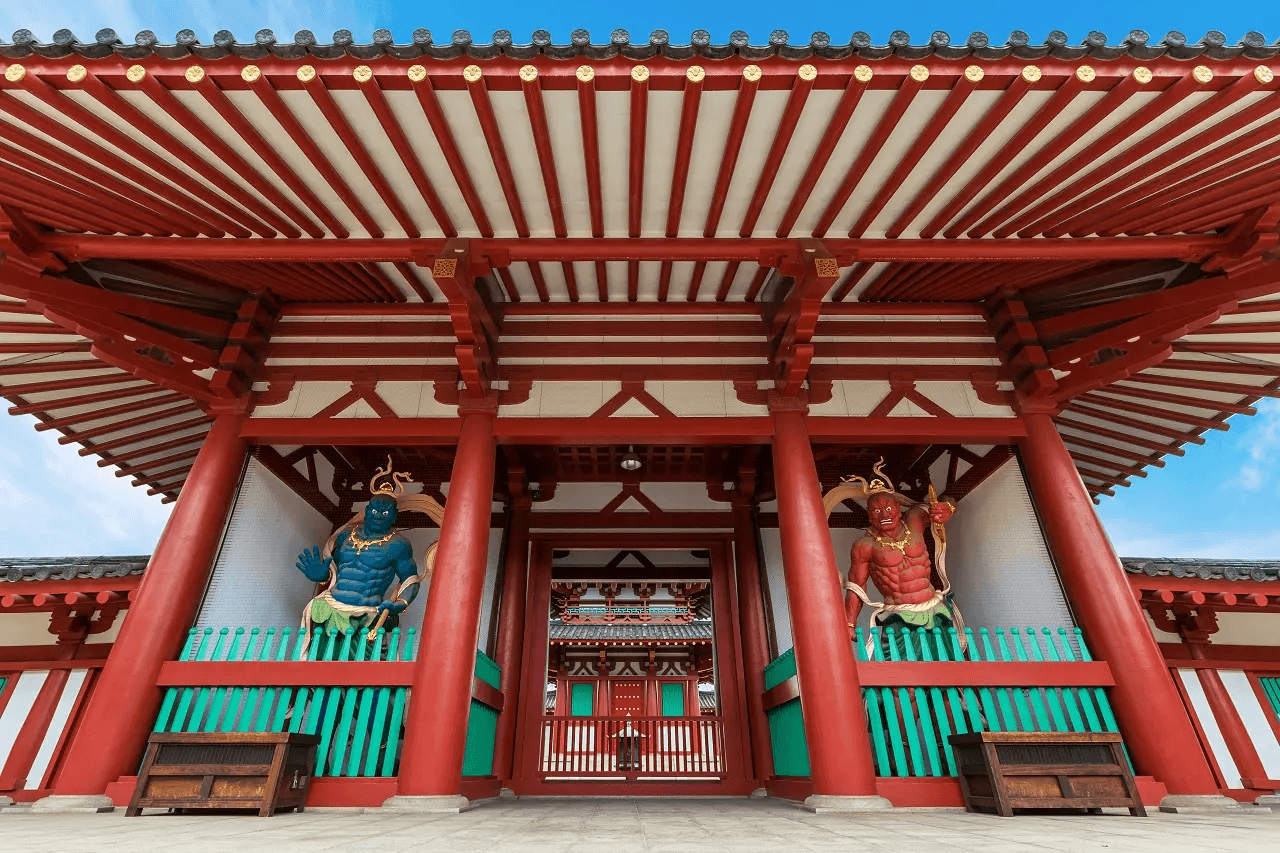
Paints of Excellent Durability
Demanded for Rebuilding the Temple after Repeated Destruction
In addition to the historical value of retaining the ancient design, Shitennoji Temple is remarkable in that it is a living heritage. The temple, situated in a thriving metropolis, is visited by many people for various purposes. Some to worship Buddha, others to stroll in the precincts, and still others to attend various events held there. In fact, the temple is more than a historical monument or a religious facility exclusively for Buddhists. It is a place where various types of visitors recognize the extensive influence of Buddhism, which is embedded in Japanese minds.
The original structures of Shitennoji Temple were destroyed by fire during the Heian period (794–1185). It is believed that the structures rebuilt after that fire collapsed when earthquakes occurred in 1361 and 1510, but the temple was rebuilt after each time it was destroyed. In 1576, the temple was destroyed once again by fire when Oda Nobunaga’s *1 army attacked Ishiyama Honganji Temple (located at the present site of Osaka Castle) in Osaka. After its reconstruction by Toyotomi Hideyoshi *2, the temple was burned down again in the winter campaign of the Siege of Osaka in 1614, but it was rebuilt with the aid of the Tokugawa shogunate. In 1813, the temple structures were destroyed by a thunderbolt. For the sixth time, the five-storied pagoda and Kondo Hall were rebuilt mainly by wealthy merchants in Osaka. Even after then, the temple was destroyed by the Muroto Typhoon in 1934 and by the Great Air Raid of Osaka in 1945 before its reconstruction after World War II. Since the temple is situated in a large city that has been thriving since ancient times, it was frequently involved in armed conflicts. At the same time, however, the location made it relatively easy to raise funds for its reconstruction.
The temple’s amazing resilience is attributable to the fact that it was founded by Prince Shotoku *3. With the times, people began to revere Prince Shotoku more and more deeply as a charismatic figure who worked to spread Buddhism and contributed to Japan’s nation building. The temple was visited by ex-emperors and founders of various sects of Buddhism, including Saicho *4, Kukai *5, and Shinran *6. At the time of social changes, people considered Shitennoji Temple as the original point that they should return to. As a place where people can encounter the spirit of Prince Shotoku, the temple became a popular pilgrimage destination for the general public while concurrently fulfilling its role as a historically valuable facility.
A picture map of the temple precincts issued in the Edo period (1603–1868) illustrates red columns and white walls, which make a striking contrast. It also shows the Shitennoji-style layout, characterized by the locations of the Chumon Gate, five-storied pagoda, Kondo main hall, and Kodo lecture hall aligned on a single straight line. Paints applied to the structures have the function of protecting timbers, in addition to enhancing the aesthetic appearance. The temple buildings that people associate with Prince Shotoku have been rebuilt repeatedly, and to elongate the buildings’ lifespan, paints have been applied to the structures. Each time of a rebuilding project, the most advanced expertise and cutting-edge technologies of the time have been adopted to long sustain the facility, which was loved by many people.
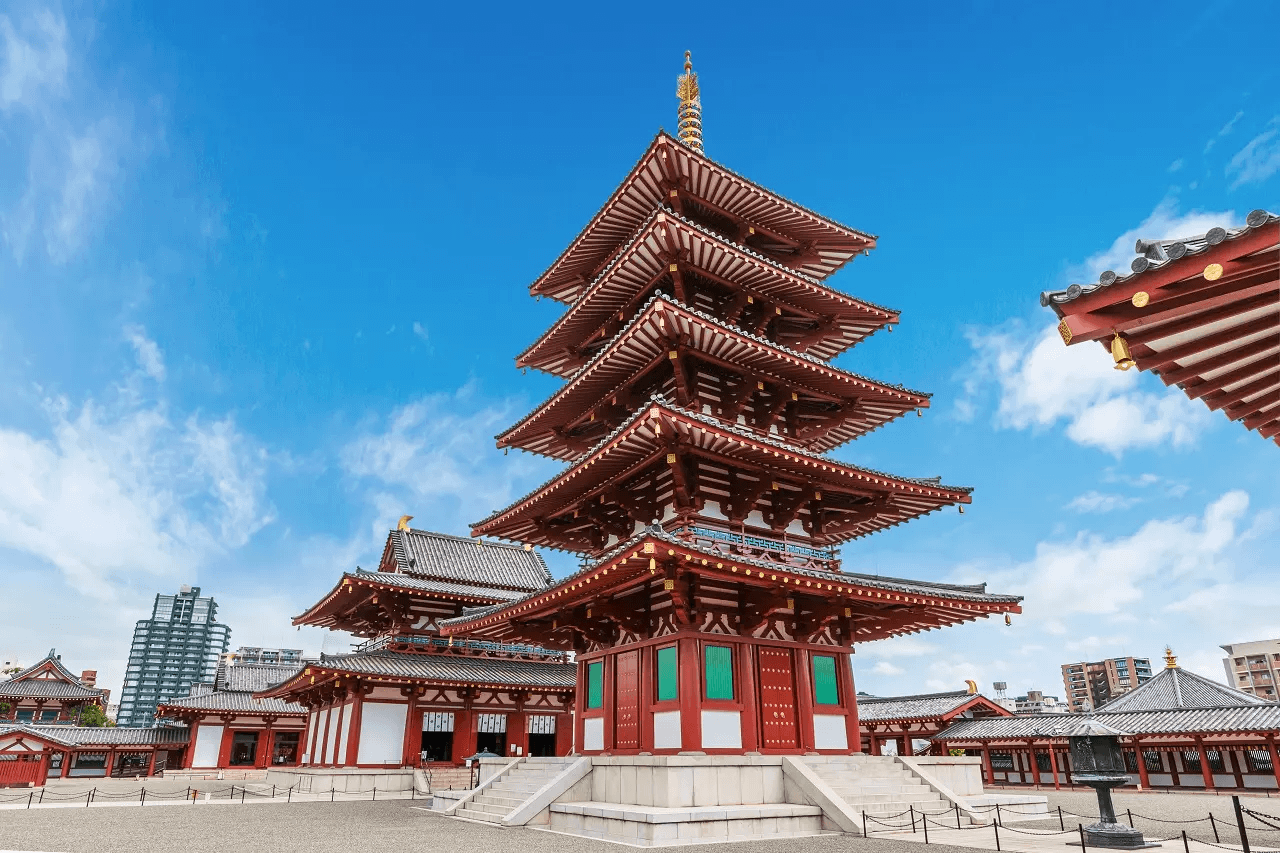
Cutting-edge Painting Technologies
Pass on the Historical Value of Shitennoji Temple
After the end of World War II, Shitennoji Temple was rebuilt in the form of ferrous concrete structures in recognition of repeated destruction by fire. Architects concerned decided to rebuild its structures as non-inflammable buildings and adopted cutting-edge technologies. Coating the concrete surface, however, entailed significantly different techniques from those to apply paints on timbers. Since the temple is visited by many people throughout the year, paints must be durable. At the same time, colors should be authentic and suitable to the temple founded by Prince Shotoku.
Half a century has already passed now since the latest reconstruction project of the temple. The post-war restoration project was based on an academic, yet romantic design concept reflecting longing for ancient times. We are now entering a historical period in which this design concept itself tells us about the postwar era. In the recent renovation project, we adopted a new coating technology that has advanced over the past half a century. In consideration of the fact that the temple has a great many visitors, particular attention has been paid to the safety and durability of paints, in addition to their aesthetic impacts and performance of protecting the structures. Being a living heritage makes the temple a place where state-of- the-art technologies are gathered. Moreover, the temple’s traditions and its association with Prince Shotoku have deep implications for the architectural design of its buildings. In this respect, cutting-edge technologies of respective epochs play key roles in sustaining the temple structures.
*1 Oda Nobunaga (1532-1582), the first warlord to unify Japan during the period of civil strife known as the Sengoku period (1467-1615).
*2 Toyotomi Hideyoshi (1537-1598), a warlord of the Azuchi-Momoyama period (1573-1603) who succeeded Oda Nobunaga in unifying the country.
*3 Prince Shotoku (674-622), a politician and religious thinker of the Asuka period (592-710).
*4 Saicho (766-822), founder of the Tendai sect.
*5 Kukai (774-835), founder of the Shingon sect.
*6 Shinran (1173-1262) is the founder of the Jodo Shinshu sect.
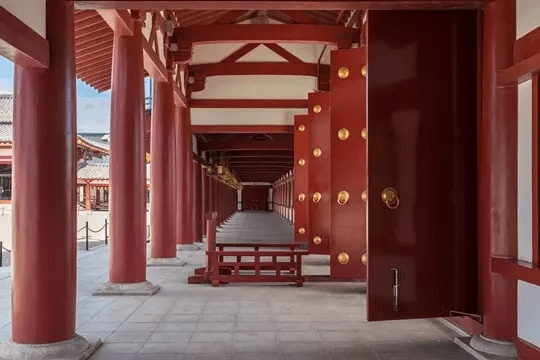
Paints of Nippon Paint Co., Ltd. are used at Shitennoji Temple. Please click here for more information.
https://www.nipponpaint.co.jp/
(Japanese only)



